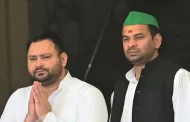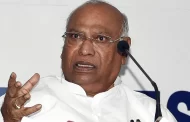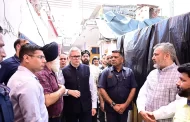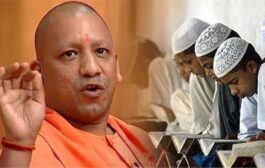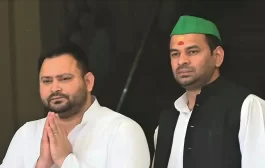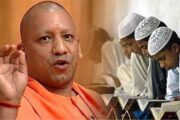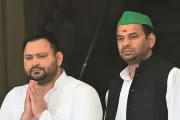The US President’s visit is aimed at boosting his own and Prime Minister Narendra Modi’s political profile. The duo get on like a house on fire and are mirror images of each other

While President Donald Trump arrives in India after his acquittal on the charges of abuse of power and obstruction of Congress — having the dubious distinction of being only the third president in the US history to be impeached by the House — PM Modi is battling an uprising of millions of Indians demonstrating and protesting against a fundamentally discriminatory and religiously bigoted legislation, Citizenship Amendment Act, 2019 (CAA) passed by his Hindu-Nationalist government.
It is also for the first time that India’s most powerful Prime Minister has faced an unexpected real opposition, albeit outside the Parliament, from people of India including women protestors.
It is therefore critical that despite the bromance and the hoopla of this historic visit, we must not lose sight of the current political environment that has beleaguered the two embattled leaders of the world’s largest and the oldest democracies.
‘Namaste Trump’ or ‘Kem Chho Trump,’ brings a full circle to the ‘Howdy! Modi’ event that attracted nearly 50,000 Indian-Americans in Houston in September 2019, also attended by Trump. In return, Trump now has been promised ‘millions and millions of people’ to greet him and the First Lady, Melania Trump.
In many ways, Trump and Modi share several similarities. Both leaders derive their politics on arousing nationalism, majoritarianism and pursuing politics of fear and polarization.
Trump started his presidency announcing a travel ban or Muslim ban in 2017, leading up to restricting permanent immigration visas to six additional countries, mostly with Muslim majority. During his last address to the United Nations General assembly (UNGA), he spoke of the governments defending their “history, culture and heritage” in the name of national identity while justifying his own decision.
Similarly, Modi proclaimed that “[we] were nationalist, are nationalist and will remain nationalist” during his 2019 election rallies. His dictatorial and authoritarian politics with the abrogation of Article 370 despite consistent decline in terrorist violence has impacted the only Muslim-dominated state of India resulting in the longest-ever internet shut down by a democracy, loss of about 4.96 lakh jobs in four months, economic loss of nearly $2.4 billion, arbitrary detention of political leaders under J&K’s draconian Public Safety Act, and crippling the lives of nearly 8 million people.

While President Donald Trump arrives in India after his acquittal on the charges of abuse of power and obstruction of Congress — having the dubious distinction of being only the third president in the US history to be impeached by the House — PM Modi is battling an uprising of millions of Indians demonstrating and protesting against a fundamentally discriminatory and religiously bigoted legislation, Citizenship Amendment Act, 2019 (CAA) passed by his Hindu-Nationalist government.
It is also for the first time that India’s most powerful Prime Minister has faced an unexpected real opposition, albeit outside the Parliament, from people of India including women protestors.
It is therefore critical that despite the bromance and the hoopla of this historic visit, we must not lose sight of the current political environment that has beleaguered the two embattled leaders of the world’s largest and the oldest democracies.
‘Namaste Trump’ or ‘Kem Chho Trump,’ brings a full circle to the ‘Howdy! Modi’ event that attracted nearly 50,000 Indian-Americans in Houston in September 2019, also attended by Trump. In return, Trump now has been promised ‘millions and millions of people’ to greet him and the First Lady, Melania Trump.
In many ways, Trump and Modi share several similarities. Both leaders derive their politics on arousing nationalism, majoritarianism and pursuing politics of fear and polarization.
Trump started his presidency announcing a travel ban or Muslim ban in 2017, leading up to restricting permanent immigration visas to six additional countries, mostly with Muslim majority. During his last address to the United Nations General assembly (UNGA), he spoke of the governments defending their “history, culture and heritage” in the name of national identity while justifying his own decision.
Similarly, Modi proclaimed that “[we] were nationalist, are nationalist and will remain nationalist” during his 2019 election rallies. His dictatorial and authoritarian politics with the abrogation of Article 370 despite consistent decline in terrorist violence has impacted the only Muslim-dominated state of India resulting in the longest-ever internet shut down by a democracy, loss of about 4.96 lakh jobs in four months, economic loss of nearly $2.4 billion, arbitrary detention of political leaders under J&K’s draconian Public Safety Act, and crippling the lives of nearly 8 million people.


Recognising Trump’s upcoming visit to India, four US Senators including influential Republican Lindsay Graham, in a bipartisan initiative have noted severe consequences of Modi government’s unilateral revocation of Article 370 and have urged the Indian government to restore normalcy in the state. Only time will tell whether Trump will carry his Senators’ message to his counterpart.
Further similarities include the two strongmen making deeply polarising statements, disparaging entire communities based on race or religion. Trump has called undocumented immigrants as “thugs” and “animals” or Mexican immigrants as criminals and rapists despite multiple studies revealing that immigrants are less likely to be involved in crime.
Modi on the other hand has extolled his ability to ‘identify violent people by their clothes,’ and has in the past compared refugee camps that sheltered the victims (mostly Muslims) of Godhra pogrom in 2002 as “baby-making factories.”
Similarly, India’s Home Minister, the second most powerful leader, has labelled illegal immigrants as infiltrators, termites, and promised to throw them into the Bay of Bengal.
While Trump’s policies have defended the detention camps in the US, Modi has blatantly denied its existence in India despite being under construction, with the Ministry of Home Affairs issuing a model Detention Camp Manual in 2019.
Both the leaders’ penchant for nationalism touts their foreign policy as America First and India First.
However, it will be of much interest to find the first among equals during this trip.
The intersection of saffron-supremacy & white-supremacy
Even as Trump fans white nationalism, Modi caters to Hindu-nationalism, which I have argued elsewhere as establishing ‘Saffron-Supremacy’ instead – all of them being eerily dangerous to promote in a multicultural and pluralistic society grounded on the principles of egalitarianism, secularism and inclusivity.
In many ways, polarisation of communities has fuelled White-Supremacy and Saffron-Supremacy alike, relying on stoking ungrounded fears of existential crisis, for example, immigrants will invade America, or Muslims will outnumber Hindu population in India. None of which is evidence-based but rooted in polarisation of the “other.”
In a post 9/11 world, hate disguised as Islamophobia has been normalized to unite the far-right. The consequences of such polarity are far-reaching and gravely similar.
Based on the FBI’s annual report, US has witnessed a rise in violent hate crimes and threats with a significant increase in violence against Latinos and transgender people, with Jews and Jewish institutions being overwhelmingly targeted of religion-based hate crimes. Much of this is attributed to the hate speech and fear-mongering coming from the right wing of the Republican Party.
source: NH



